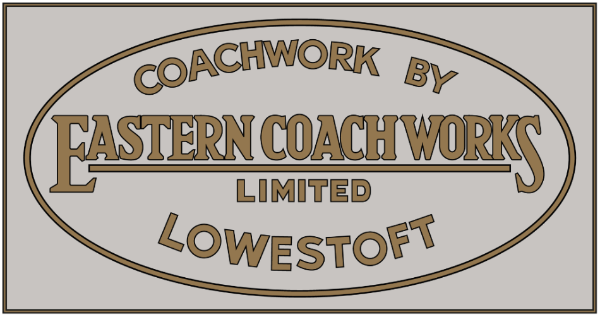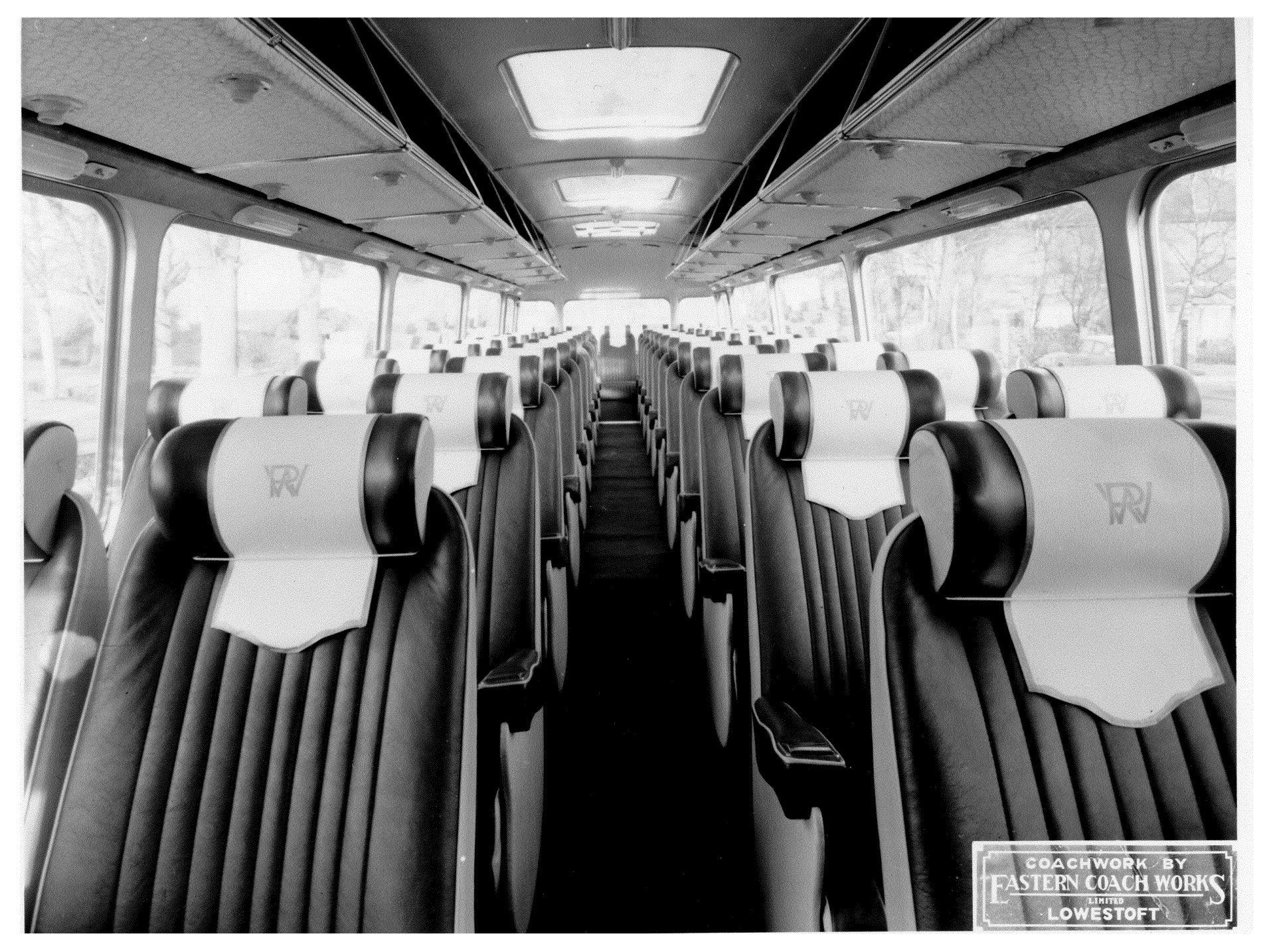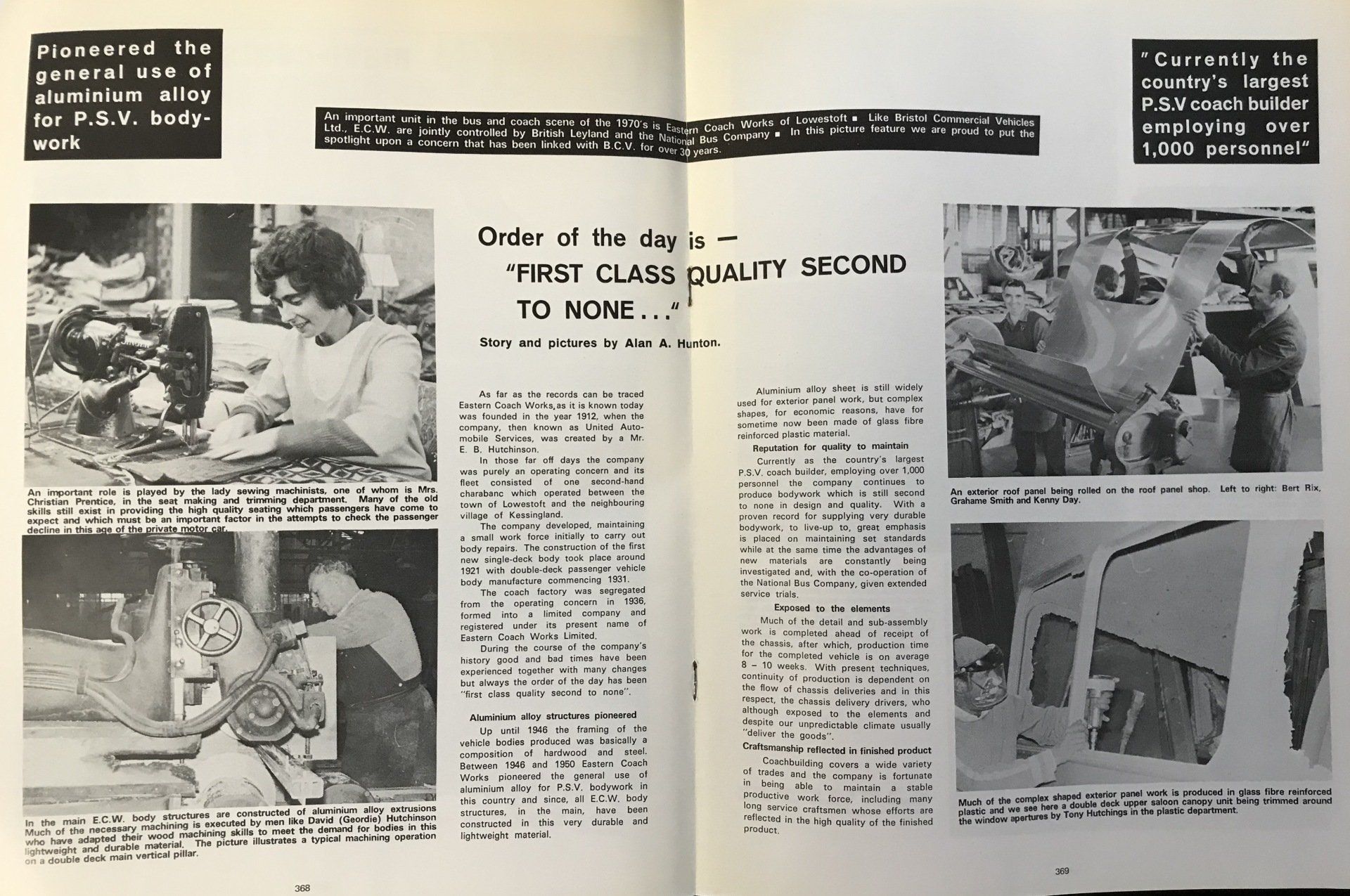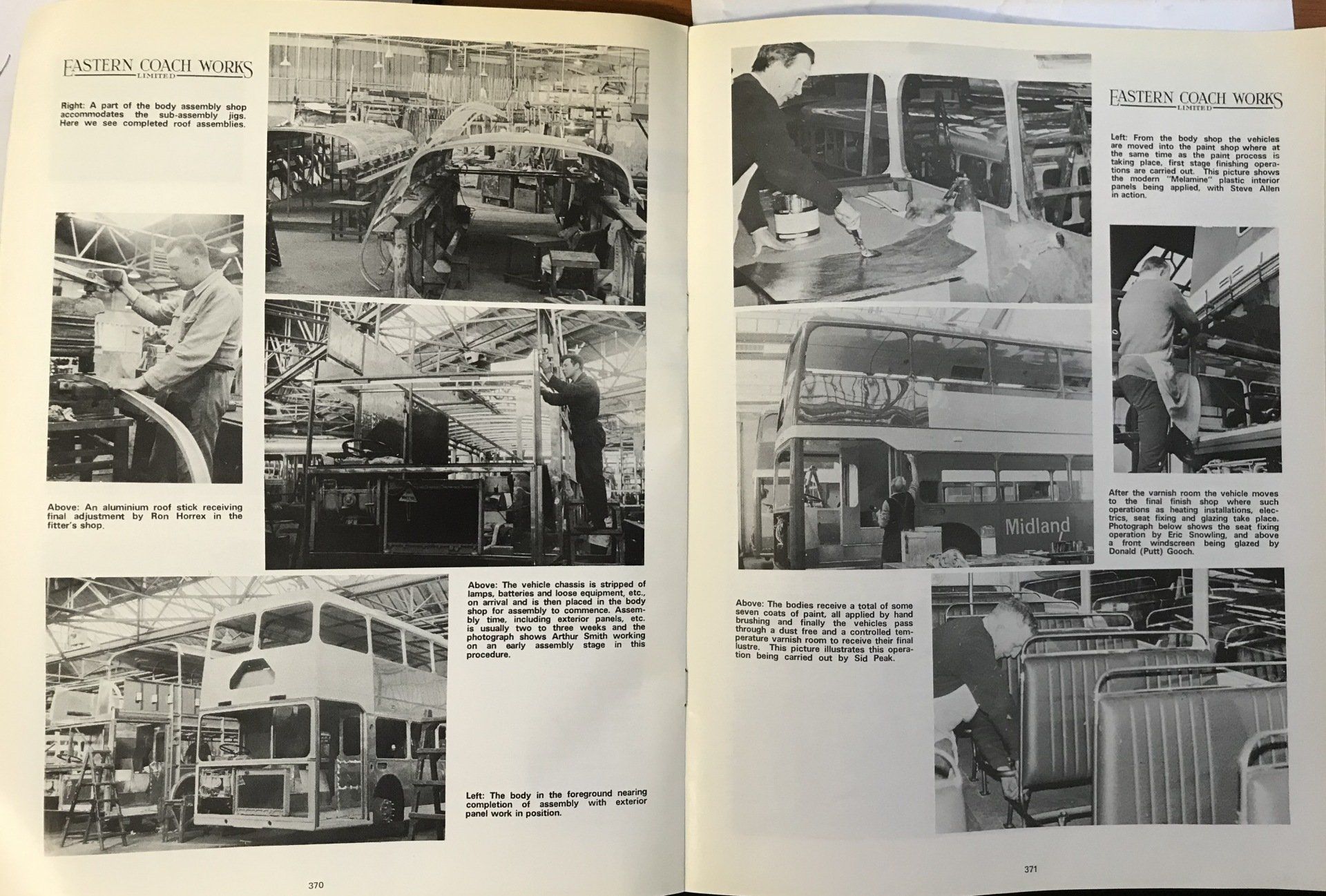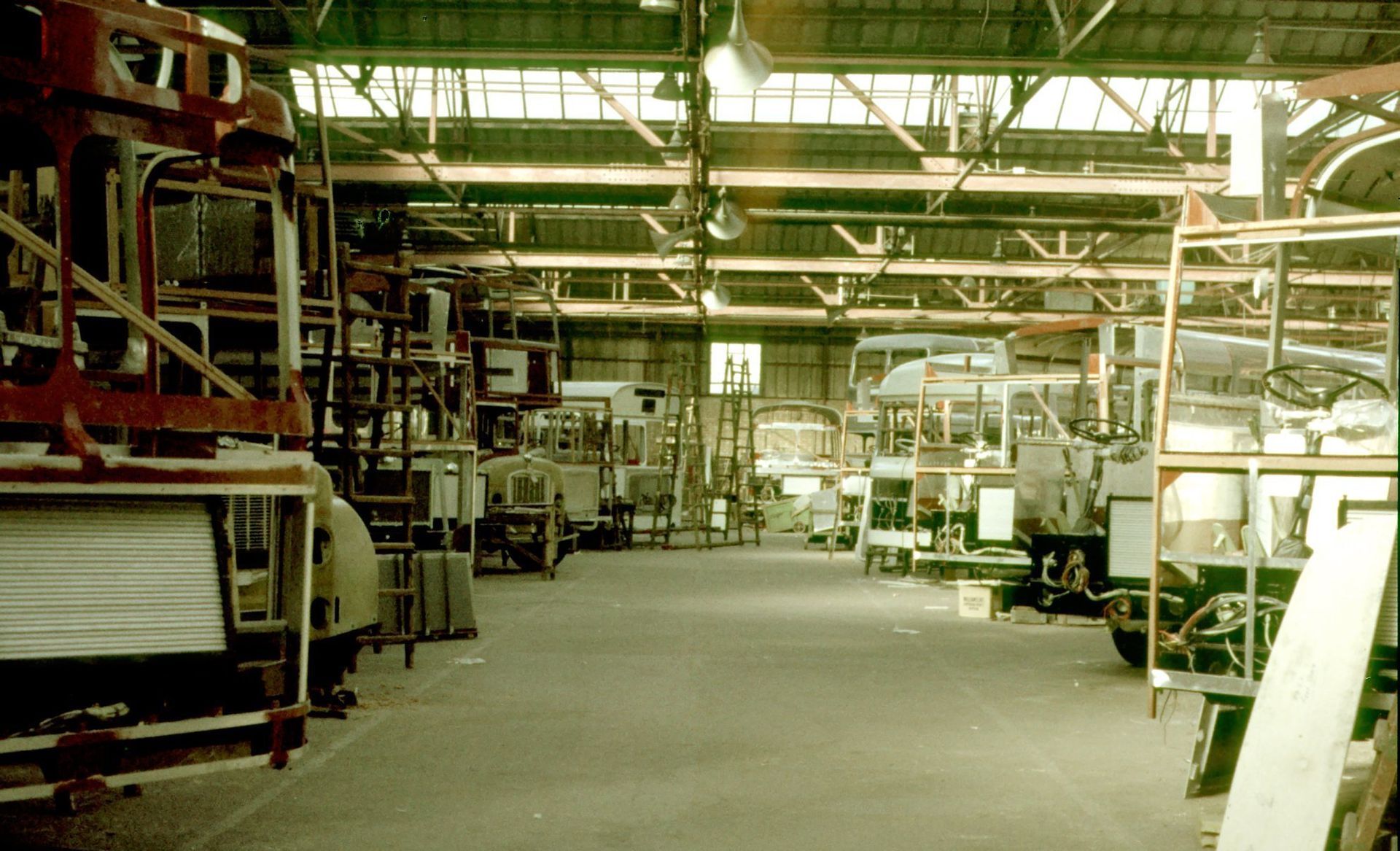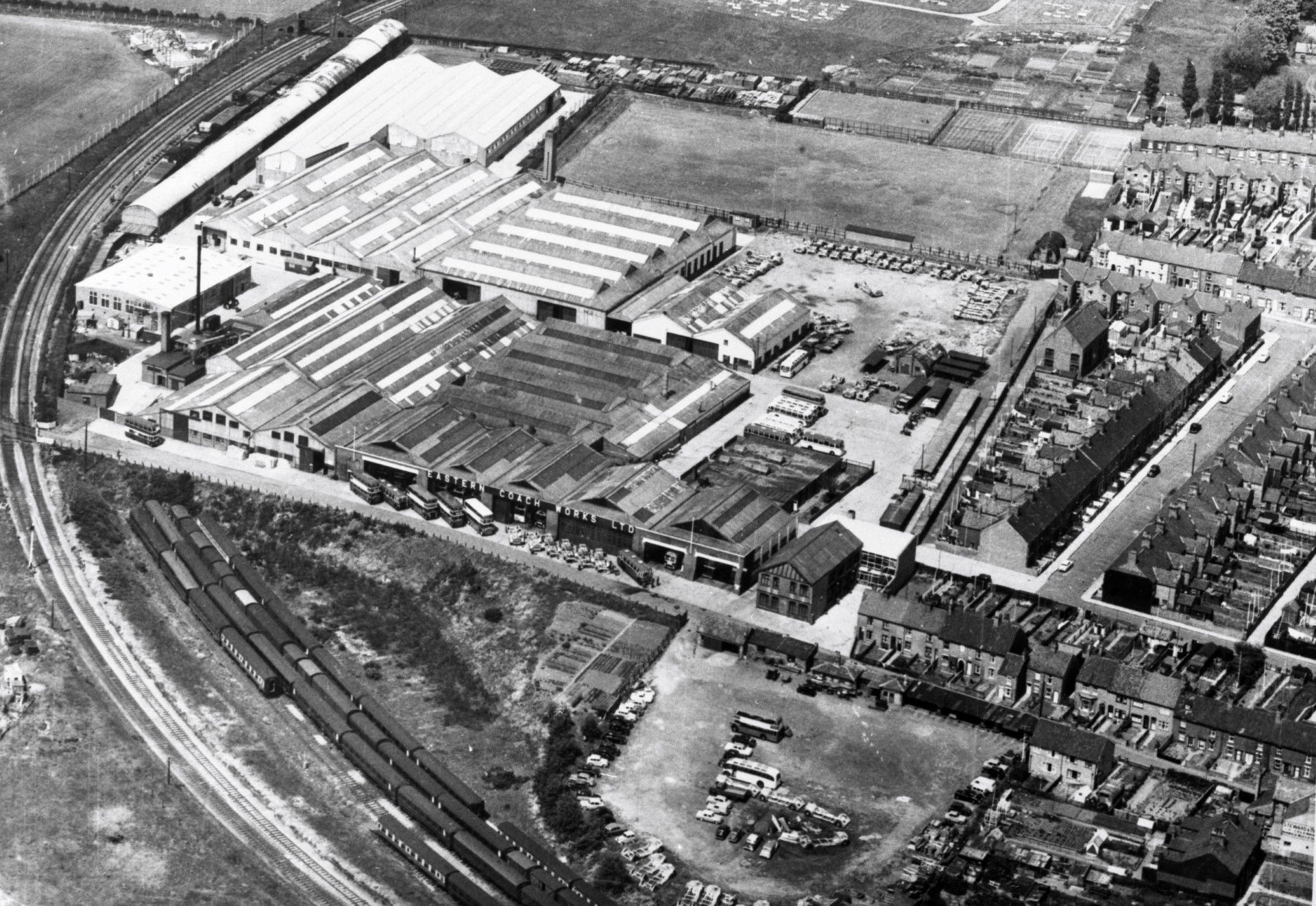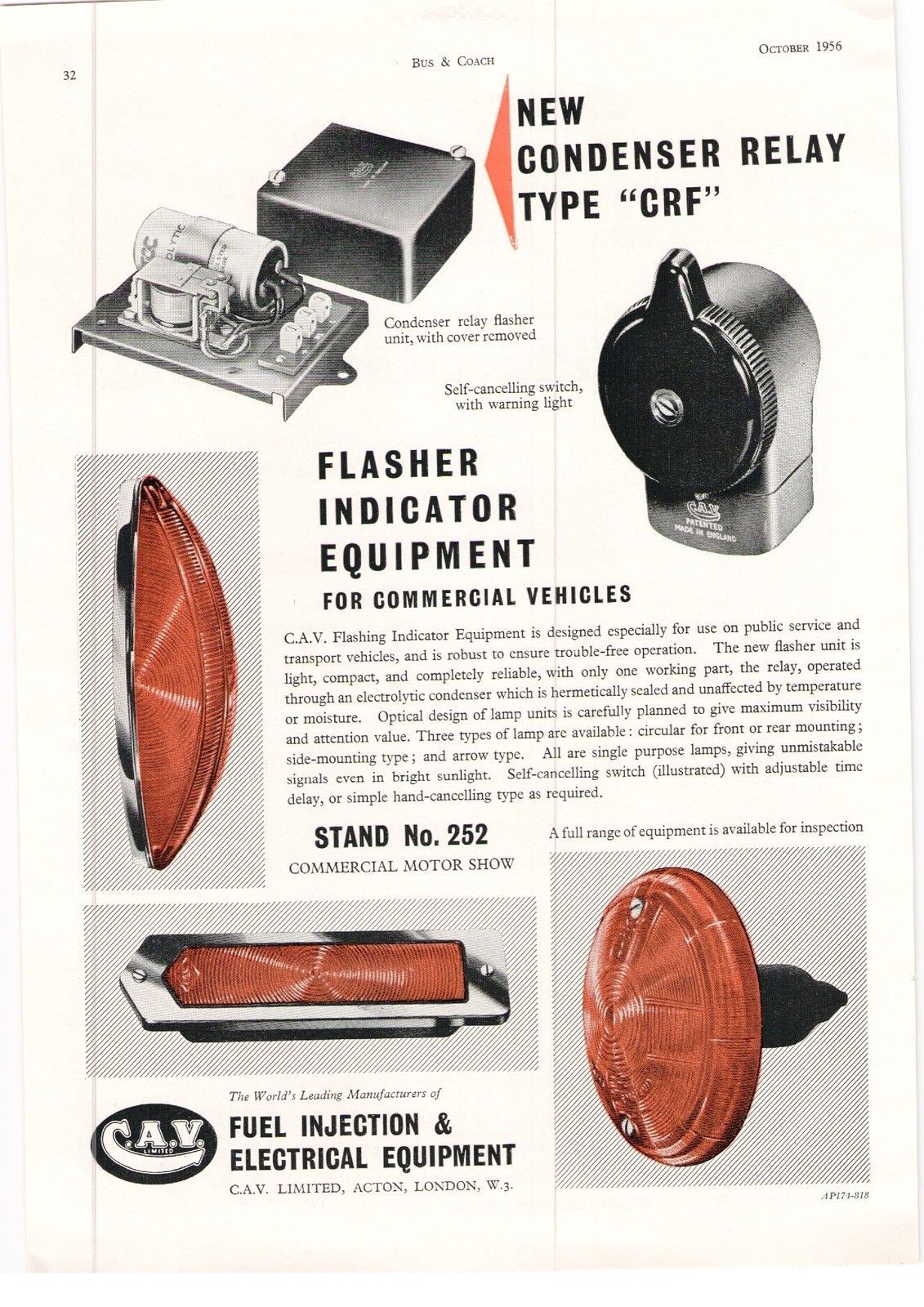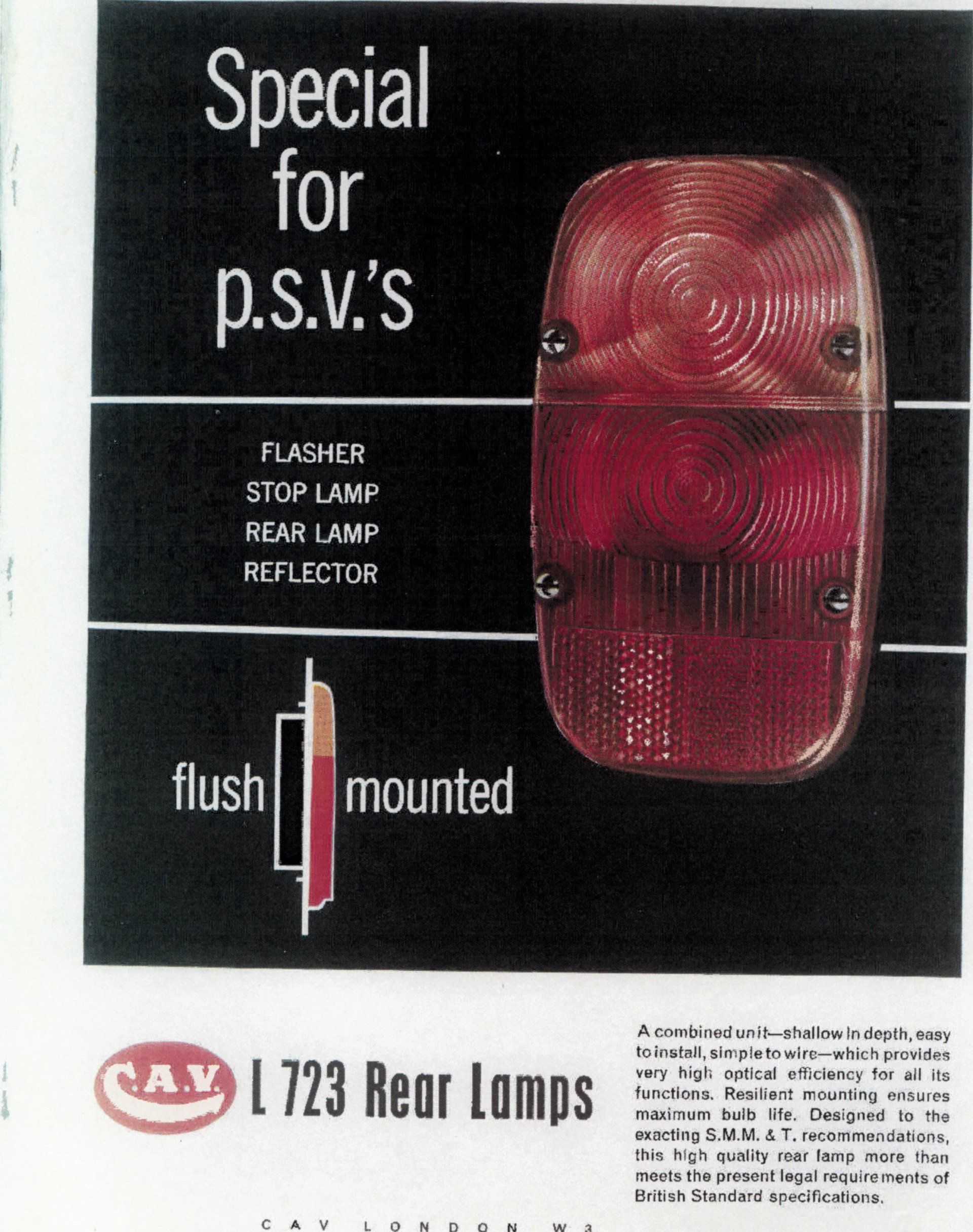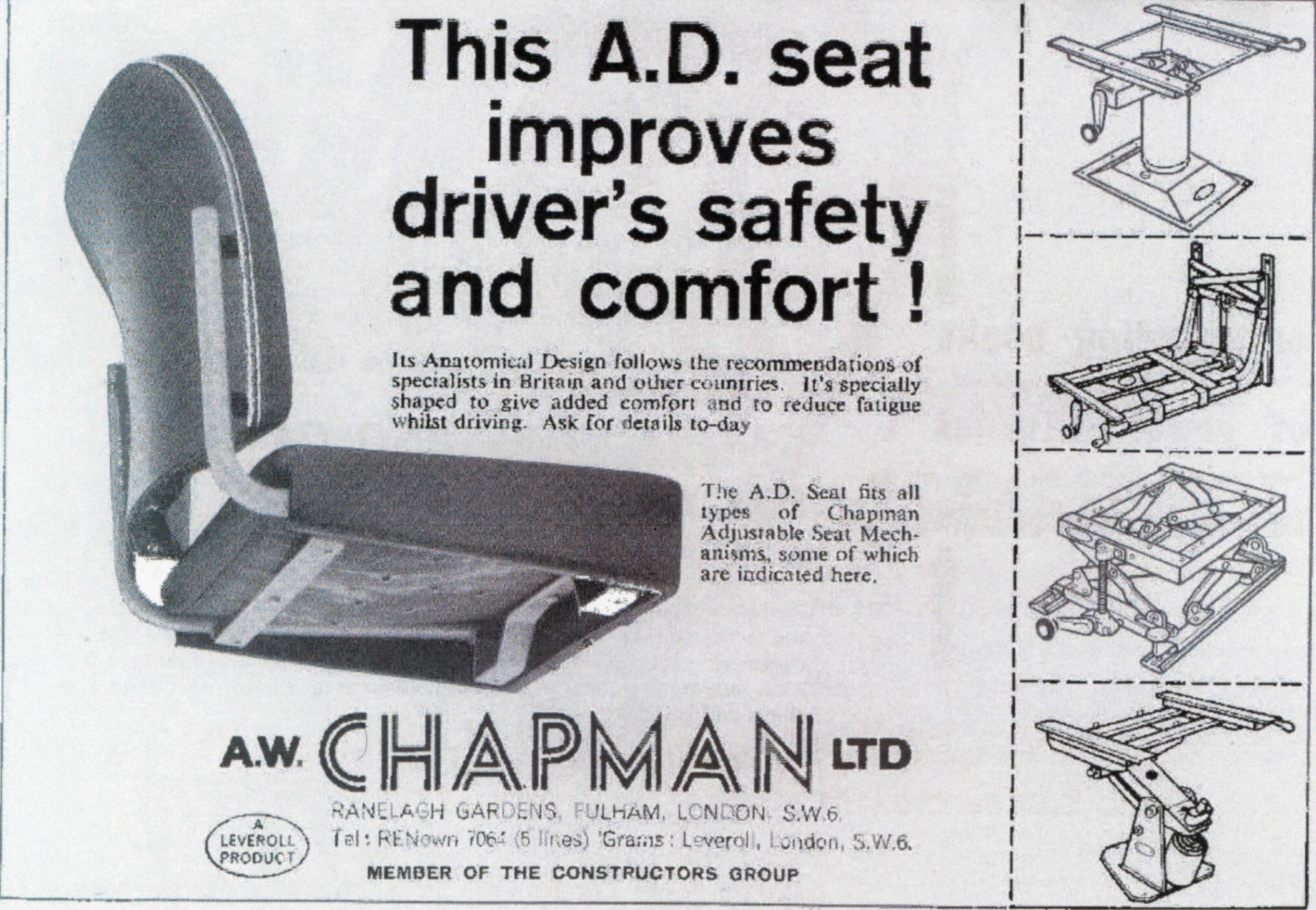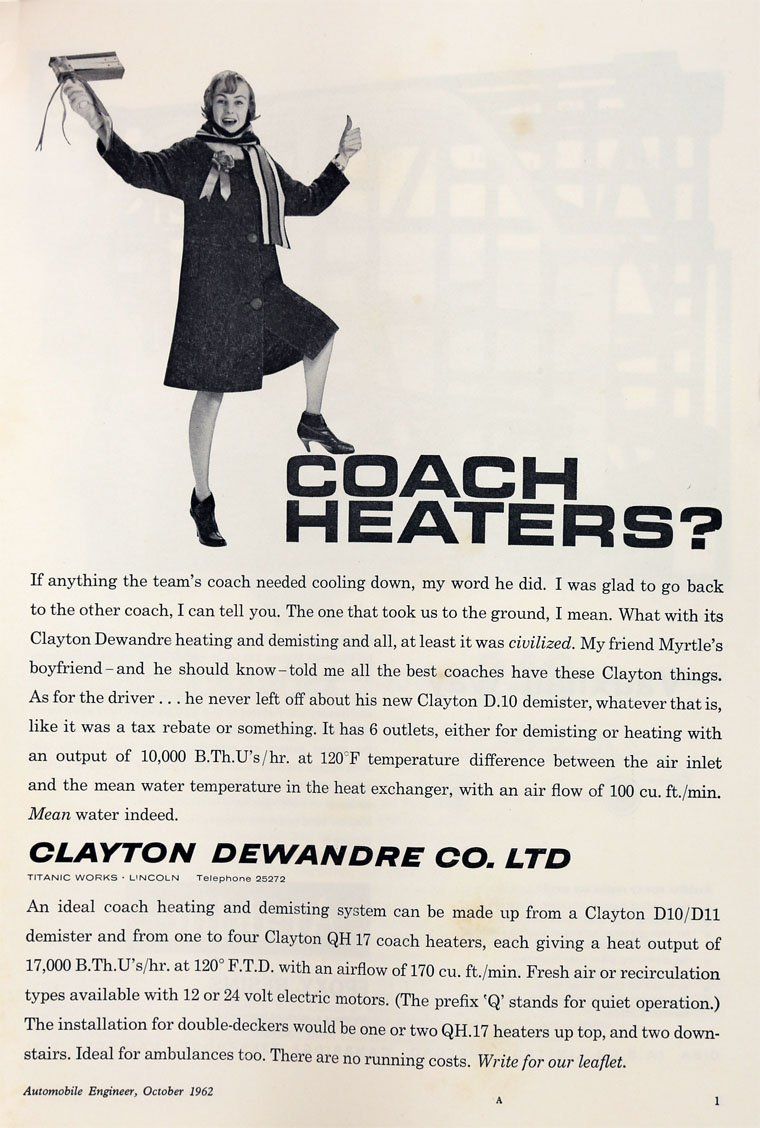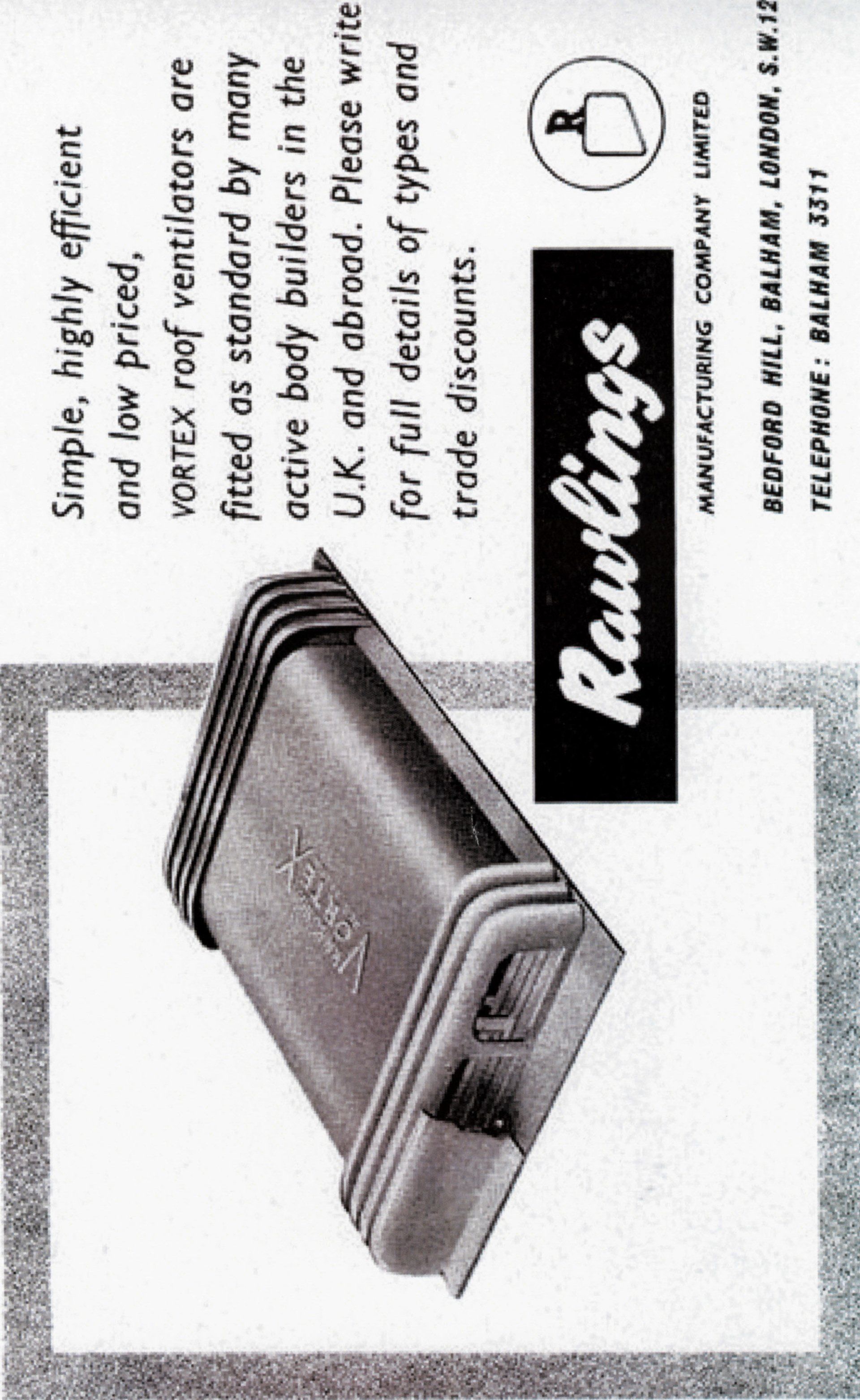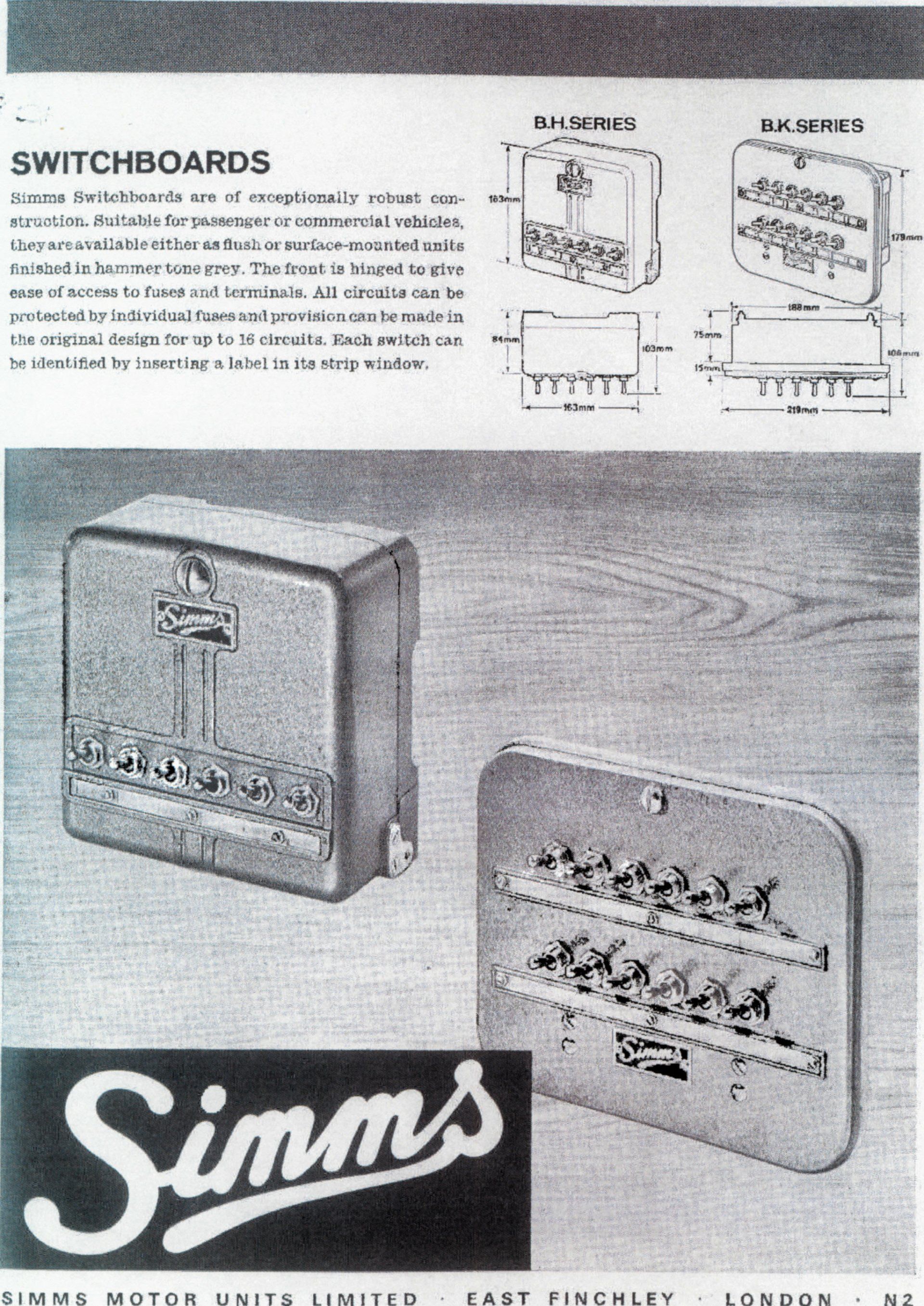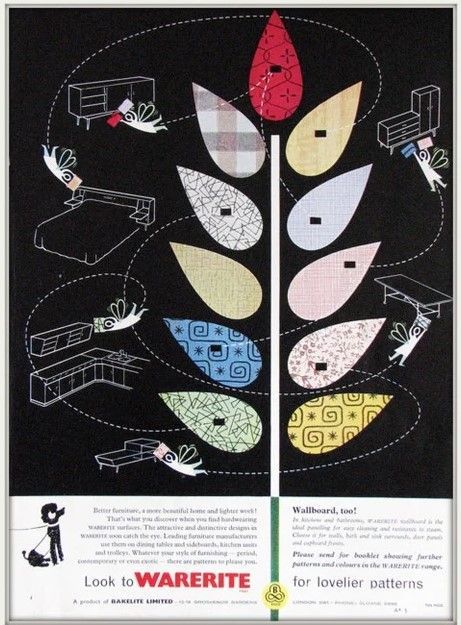
EASTERN COACH WORKS
-
Button
This logo was displayed inside at the front of all their coachwork.
-
OAX 8F
ButtonOfficial photograph taken at Eastern Coach Works factory on 23 January 1968 of OAX 8F, by Laurence Gall (Commercial photographer used by ECW).
-
GWO 4D Interior
ButtonPhotograph taken on 4 January 1966 of GWO 4D at Lowestoft by Laurence Gall (the official ECW photographer).
-
GWO 4D interior
ButtonPhotograph taken on 4 January 1966 of GWO 4D at Lowestoft.
Images from the ECW Archive collection (courtesy of S Butler).
-
Original coachwork drawing - nearside.
Button -
Original coachwork drawing - offside.
Button -
Original coachwork drawing - interior seat layout.
Button -
Eastern Coach Works factory front doors.
Button -
Original coachwork drawing - front.
Button -
Original coachwork drawing - rear.
Button -
Article about ECW from 1971.
ButtonSection 1.
-
Article about ECW from 1971.
ButtonSection 2.
The skilled craftsmen at ECW manufactured most of the coachwork themselves by hand from raw materials - aluminium, steel, hardwood and fibreglass. However, they bought-in components from specialist manufacturers - here we list most of the suppliers ECW used to build our Ruby:
- Brifex - leather cloth material used on interior side walls; front & rear domes & underside of luggage racks.
- CAV - electrical control panel, rear lights, fog light, door controls.
- Chapman - driver’s pedestal 'A.D type' seat.
- Clayton Dewandre – floor-mounted saloon fan heaters.
- Frankmann - exterior front trafficator lights.
- Kelbus – destination blind winding equipment.
- Linoleum - flooring for luggage lockers & kick panels in saloon.
- Lucas - exterior headlight units.
- Nesthill - exterior rear view mirrors.
- Philips - interior fluorescent light tubes & ballast units.
- Rawlings - 'Vortex' roof-mounted ventilators.
- Simms - electrical control panels and switches.
- Smiths - electrical switch panel, trafficator switch, overhead air vents (under luggage racks).
- Treadmaster - cork vinyl flooring.
- Warerite - window panel laminated plastic inserts.
- Weathershields - opening sky-lights.
- Wilmot Breedon - chrome ash trays (installed in seat arm rests) and seat-back grab handles.
Pictured (below) are some original 1960's magazine adverts for some of the component suppliers listed.
-
CAV
ButtonSupplied traffic indicators.
-
CAV
ButtonAlso supplied rear light units.
-
Chapman
ButtonSupplied their AD drivers seat.
-
Clayton Dewandre
ButtonSupplied floor-mounted heater units.
-
Philips
ButtonSupplied their fluorescent interior lighting system.
-
Rawlings
ButtonSupplied their 'Vortex' roof ventilators.
-
SIMMS
ButtonSupplied their electrical control panel.
-
Warerite
ButtonSupplied laminate plastic sheeting for window surrounds.
www.redandwhitebus.com Website design & copyright: Radley Creative, Oxfordshire. 2024.
